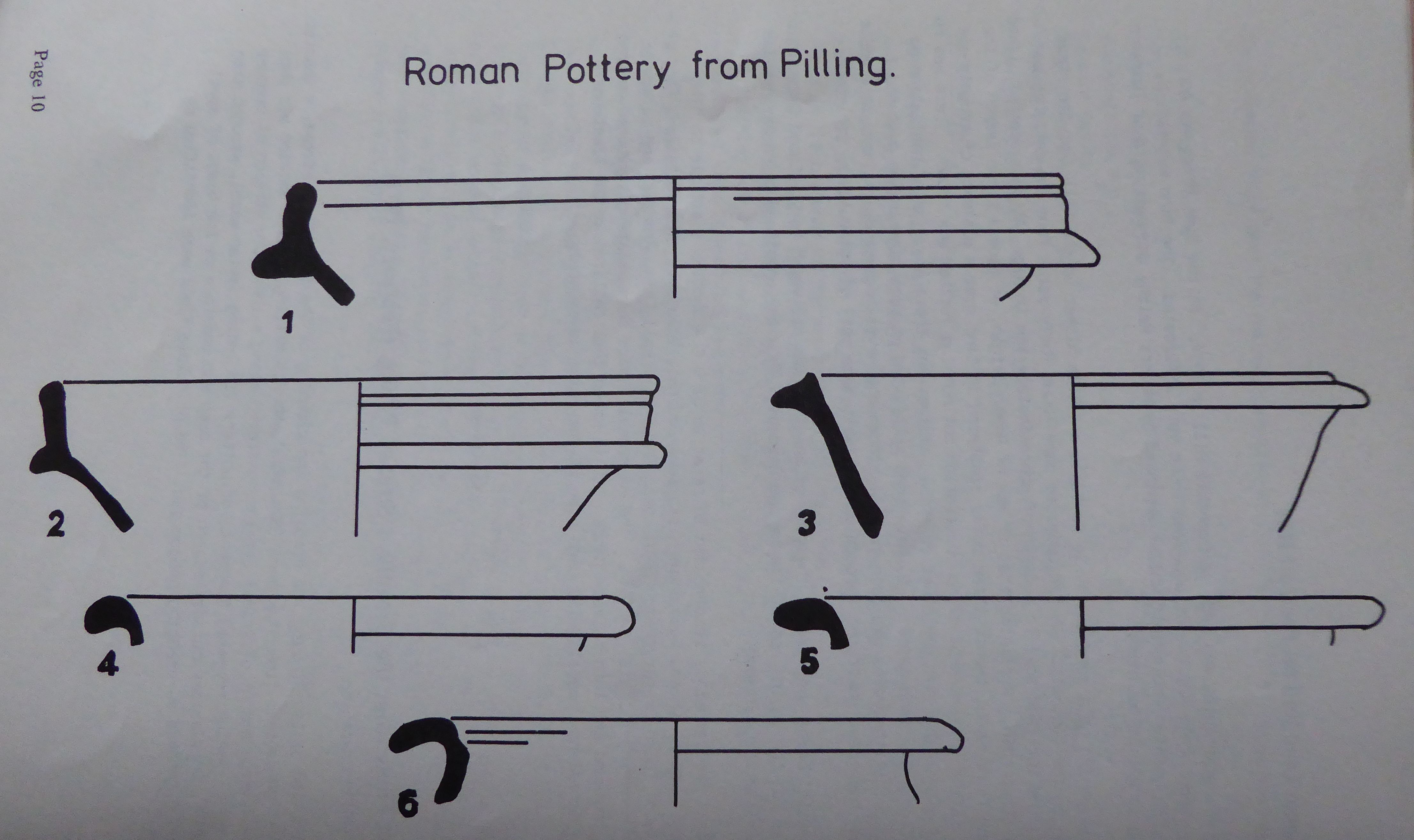Roman Finds from the Broadfleet Stream, Pilling. (February, 1971)
by W Headlie Lawrenson
In the Spring of 1971 during the dredging and widening of the Broadfleet stream, a quarter of a mile downstream from Stakepool (SD411482), Mr Ron Melling, whilst walking his dog, noticed a large amount of animal remains scattered along a 100-metre stretch of dredged material. A search revealed fragments of pottery (including Samian ware), wrought iron and glass. Only a very cursory search of the area was possible as the heaps of spell were being removed as dredging progressed. The principle finds were identified as follows:-
Pottery (identified by RC Turner)
No 1 A mortarium in a smooth, white fabric with no grits remaining. A type made at the Crambeck kilns in the period AD 370-400
No 2 A bowl reminiscent of Dragendorff's samian form 38 in a smooth, hand, lead-grey fabric. Type very close to Gillam 204, AD 360-400
No 3 A very worn, flayed bowl in a smooth, grey fabric similar to Gillam forms 28 DE 331, AD 350-400
Nos 4 A group of cooking pot rims in a black, calcite gritted fabric. These types of 5 and 6 jar first occur in the early 4th century but flood the market from c. 10 30 onwards.
Animal Bones (identified by Prof W T W Potts)
The collection includes:-
A. Right upper jaw of cow with three teeth in place
B. Single phalange of horse
C. Fragment of pelvic bone of cow. (This has been sawn, though at what stage is not clear.)
D. Three teeth (two adjacent) of horse
E. Five teeth (isolated) of cow
F. Left upper canine of a large dog (or possibly wolf).
Glass
Miss Dorothy Charlesworth reported that whilst some of the fragments could be Roman, the collection certainly contained some pieces of post-medieval date.
Footnote:-
This article was first published in Contrebis, Vol 5 1977. Thanks are due to the Editors of that publication for permission to reproduce the accompanying illustrations of the pottery finds.

